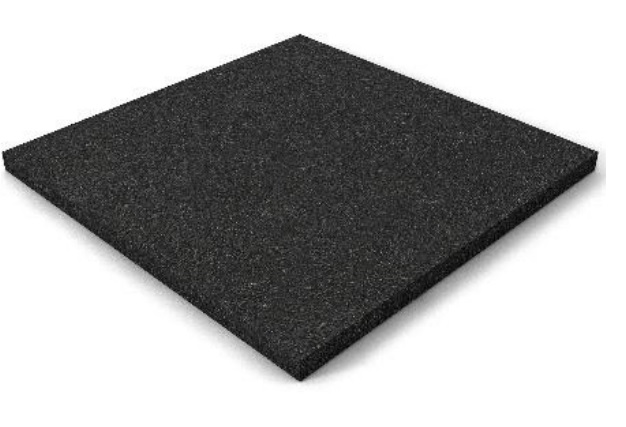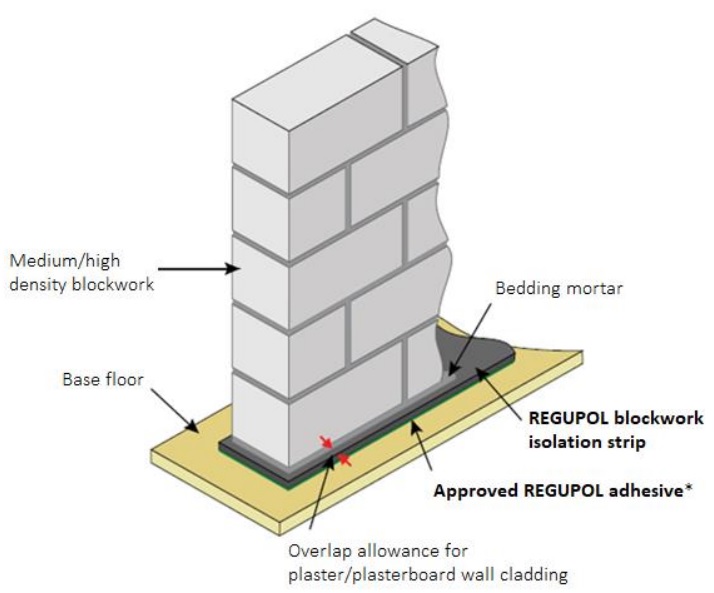REGUPOL blockwork isolation strips are designed to sit below and above blockwork walls. They are a very simple and effective way to reduce structure borne noise.
Being a rubber crumb product benefits from longevity and minimal creep.

REGUPOL blockwork isolation strips are designed to sit below and above blockwork walls. They are a very simple and effective way to reduce structure borne noise.
Being a rubber crumb product benefits from longevity and minimal creep.

1. Prepare the Base Floor. It is important that the base floor is Dry, Clean (free of dirt and concrete
dust) and Flat.
2. The REGUPOL blockwork isolation strip can either be bonded to the base floor or loose laid.
Bonding should be carried out in accordance with the adhesive manufacturer’s instructions.
Ensure that a sufficient width of REGUPOL blockwork isolation strip is used for the partition and
cladding. Any surplus material should be trimmed with a builder’s knife.
3. The measured RH of the concrete floor should be less than 75% prior to bonding the acoustic
layer. If over 75% RH, use REGUPOL barrier 99-201. To determine RH, please use a Hygrometer.
4. When bonding to a bare concrete slab the surface should be sealed before applying the adhesive.
NB
REGUPOL blockwork isolation strip has a maximum load bearing capacity of 0.8N/mm², therefore
this must be taken into consideration when calculating the linear loads